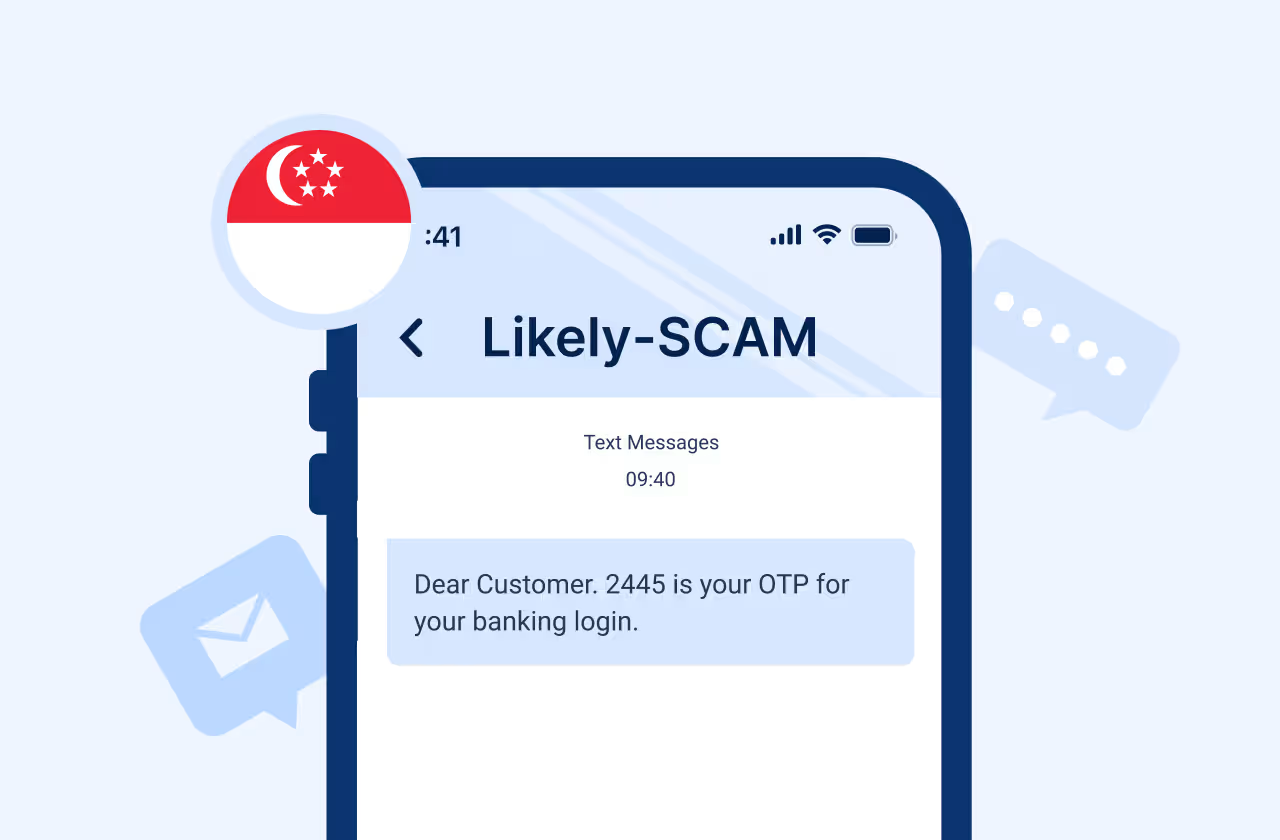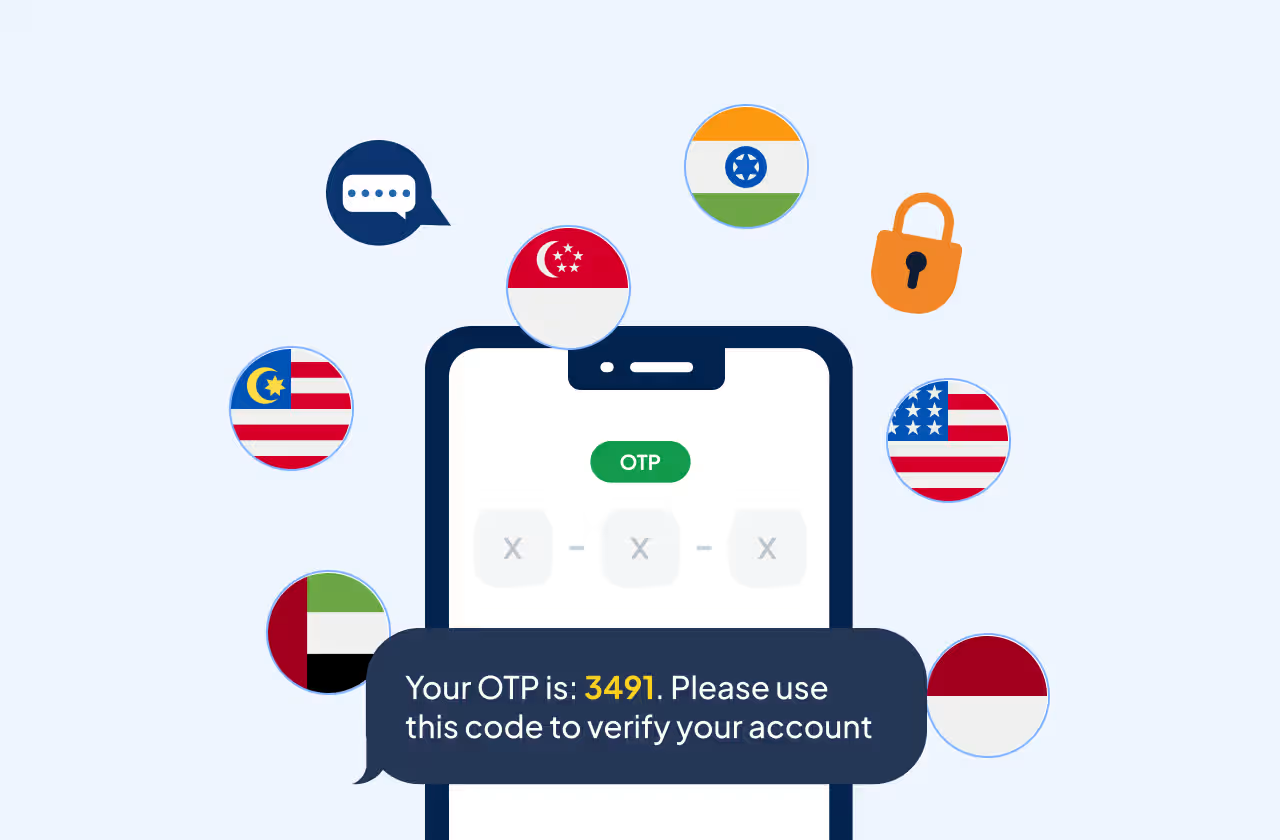Key Takeways
- SMS and push notifications can be used for multiple business scenarios of app based businesses like user verification, abandoned cart notifications etc.
- Push notifications appear on a user's screen even when they are not using the app. The length of a push notification can vary depending upon the app
- SMS or text messages are directly sent to user's mobile devices. These are mostly used for transactional purposes like OTP SMS, delivery information etc.
- SMS and push notifications differ on a lot of parameters like getting opt ins, delivery mechanism, delivery methods, impact, statistics etc.
- SMS use cases include time sensitive alerts, transactional communication etc. and push notifications are used for app updates, engaging with app users etc.
There are a lot of tools at business’s disposal to reach their customers. At the same time, a user’s attention is also diverted amongst all these channels which businesses are using to communicate.
Two highly effective tools for customer engagement are: -
- Push notifications and,
- SMS notifications
While these two channels may seem similar on the surface, there are key differences in their opt-in process, method of delivery, and impact. The difference becomes even more crucial when it comes to use cases like user verification, abandoned cart notifications etc.
Understanding these differences is vital in selecting the appropriate communication channel to maximize effectiveness.
What are SMS Notifications?
SMS notifications allow businesses to send text-based messages to their customers' mobile phones. These messages can contain up to 160 characters, although with expanded messaging features, it's now possible to send longer messages.
SMS notifications are versatile and can be used for various purposes. They can be used to send marketing messages, such as flash sale notifications, discount codes, and product review requests.
SMS notifications are also commonly used for transactional communications, such as PIN codes for online account logins i.e. SMS verification, order confirmations, delivery updates, and appointment reminders.
One of the key advantages of SMS notifications is that they work on every device, as they are delivered over a cellular network rather than the internet. This means that even basic cell phones can receive SMS messages, making it an accessible communication channel for businesses.
What are Push Notifications?
Push notifications are sent through a third-party application or website. They can appear on a user's screen even if they are not currently using the app or website.
Push notifications come from apps or websites that users have downloaded or subscribed to. They can contain a title, message copy, and even a small image or icon. The length of a push notification varies depending on the device, but it is usually between 100 and 200 characters.
The main advantage of push notifications is that they don't require users to be in a particular app or on a specific website to receive them. App or website publishers can send push notifications at any time, and many users opt-in to receive them when they download an app.
This makes push notifications an effective way to engage with users and keep them informed about updates, promotions, and other important information.
Key Differences between Push Notifications and SMS Notifications
While push notifications and SMS notifications are both effective communication channels, there are several key differences that businesses should consider when choosing between the two:

When to Use Push Notifications vs SMS Notifications

The choice between push notifications and SMS notifications depends on your business goals and the nature of your message. Here are some scenarios where each communication channel is most effective:
Use Cases for SMS Notifications:
- Time-sensitive Alerts: SMS notifications are ideal for sending emergency alerts or time-sensitive information, such as flight updates, appointment reminders, or service disruptions.
- Transactional Communications: SMS notifications are commonly used for order confirmations, delivery updates, and account verification codes like OTP SMS. They provide a reliable and immediate way to communicate important information to customers.
- Customer Engagement: SMS notifications can be used to engage with customers by sending flash sale notifications, discount codes, or product recommendations. They have a high open rate and can drive immediate action.
Use Cases for Push Notifications:
- App or Website Updates: Push notifications are an effective way to inform users about app or website updates, new features, or important announcements. They can be used to drive users back to your app or website.
- Engaging with App Users: Push notifications can be used to engage with users who have downloaded your app. They can be used to send personalized messages, encourage users to take action, or provide relevant information based on user behavior like WhatsApp notifications.
- Content Updates: Push notifications can be used to notify users about new content, such as blog posts, articles, or videos. They can help drive traffic to your website and keep users engaged with your brand.
It's important to consider your audience's preferences and communication habits when deciding which channel to use. Some users may prefer the simplicity and familiarity of SMS notifications, while others may appreciate the convenience and interactivity of push notifications.
If you need to send an urgent or time-sensitive message, SMS notifications are the best choice, as they can be delivered instantly over a cellular network. Push notifications are more suitable for non-urgent messages or updates that can be delivered when the user is connected to the internet.
Getting Started with Push Notifications and SMS Notifications
To start using push notifications or SMS notifications, you'll need the right tools and platforms. Here are some steps to get started:
- Choose a Communication Platform: Look for a reputable communication platform that offers push notification and SMS notification services. Ensure that the platform provides the features and functionality that align with your business goals.
For example: Message Now by Message Central provides SMS APIs which can be used in multiple scenarios to send SMS to users. - Integrate the Platform: Integrate the chosen platform with your mobile app or website. This may involve adding SDKs or APIs to your app or implementing code snippets on your website.
- Set Up Opt-In Processes: If you're using SMS notifications, establish an opt-in process for users to provide consent to receive messages. This could involve having users send an opt-in text or subscribing through a web form. For push notifications, ensure that users can easily opt-in or opt-out within your app or website settings.
- Craft Engaging Messages: Develop compelling and engaging messages for your push notifications and SMS notifications. Use clear and concise language to convey your message effectively and consider personalization to enhance user engagement.
- Test and Analyze: Before sending messages to your entire audience, conduct tests to ensure that your notifications are working correctly and display properly on different devices. Monitor the performance of your notifications and analyze user engagement and response rates. For SMS, you can do this by using an SMS dashboard.
- Continuously Improve: Regularly review and analyze the performance of your push notifications and SMS notifications. Use the insights gained to refine your messaging strategies and optimize your communication efforts.
Conclusion
Choosing between push notifications and SMS notifications depends on your specific business needs and communication goals. SMS notifications are reliable, accessible, and suitable for time-sensitive and transactional communications. Push notifications, on the other hand, offer convenience, interactivity, and the ability to engage with users outside of your app or website.
Start SMS Campaigns with Message Now
Message Now is an SMS API provider by Message Central. The provider has:-
- The best SMS routes
- Global connectivity
- Lowest latency
- Competitive SMS rates
- 24/7 support
If you wish to engage with users using SMS as a channel, get in touch with the Message Central team.










